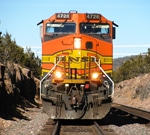
Critical incidents refer to events such as a highway-rail grade-crossing accidents or a train striking another employee or pedestrian. Railroad employees who witness such incidents are often affected psychologically and some suffer issues of post-traumatic stress disorder.
The final rule contains a definition of the term ‘‘critical incident,’’ the elements appropriate for the rail environment to be included in a railroad’s critical incident stress plan, the type of employees to be covered by the plan, a requirement that a covered railroad submit its plan to FRA for approval, and a requirement that a railroad adopt and comply with its FRA-approved plan. It is effective June 23, 2014.
The final rule requires each Class I railroad, intercity passenger railroad and commuter railroad to establish and implement a critical incident stress plan for certain employees who are directly involved in, witness, or respond to, a critical incident.
“Critical incidents have the potential to affect each and every one of us who work in the transportation industry,” said SMART Transportation Division President John Previsich. “The requirement that railroads develop and submit a plan to address such incidents is an important first step to help our members, not only in the rail industry, but also those who work for bus and air carriers. The effects of a critical incident on our members can be devastating, no matter the industry, and we will do everything in our power to extend and improve these programs whenever possible.”
Although the FRA has never regulated critical incident stress plans, many railroads have had some form of critical incident stress plan in place for many years. This rulemaking responds to the Rail Safety Improvement Act of 2008 mandate that the secretary of transportation establish regulations to define “critical incident” and to require certain railroads to develop and implement critical incident stress plans.
The FRA wants all relevant railroad personnel to be aware of the relief available pursuant to a railroad’s plan.
The FRA reviewed the applicable science and information received through the Railroad Safety Advisory Committee (RSAC) – in which the SMART Transportation Division participates – in its final rule. The final rule defines a “critical incident” as either “an accident/incident reportable to FRA under 49 CFR part 225 that results in a fatality, loss of limb, or a similarly serious bodily injury; or … a catastrophic accident/incident reportable to FRA under part 225 that could be reasonably expected to impair a directly-involved employee’s ability to perform his or her job duties safely.”
“The required set of minimum standards for critical incident stress plans include allowing a directly-involved employee to obtain relief from the remainder of the tour of duty, providing for the directly-involved employee’s transportation to the home terminal (if applicable), and offering a directly-involved employee appropriate support services following a critical incident. This final rule requires that each railroad subject to this rule submit its plan to FRA for approval.
The final rule contains minimum standards for leave, counseling, and other support services. These standards would help create benefits by providing employees with knowledge, coping skills and services that would help them: recognize and cope with symptoms of normal stress reactions that commonly occur as a result of a critical incident; reduce their chance of developing a disorder such as depression, post-traumatic stress disorder or acute stress disorder as a result of a critical incident, and recognize symptoms of psychological disorders that sometimes occur as a result of a critical incident and know how to obtain prompt evaluation and treatment of any such disorder.
The FRA anticipates that implementation of this final rule would yield benefits by reducing long-term healthcare costs associated with treating PTSD, ASD, and other stress reactions, and costs that accrue either when an employee is unable to return to work for a significant period of time or might leave railroad employment due to being affected by PTSD, ASD, or other stress reactions. In addition, safety risk posed by having a person who has just been involved in a critical incident performing safety critical functions is also reduced.
The majority of the quantifiable benefits identified by FRA’s analysis are associated with railroad employee retention and a reduction of long-term healthcare costs associated with PTSD cases that were not treated appropriately after a critical incident.
The FRA expects that this final rule would decrease the number of employees who leave the railroad industry due to PTSD, ASD, or other stress reactions, as early treatment for such conditions following exposure to a critical incident would reduce the likelihood of developing the conditions.
In addition, if a railroad employee involved in a critical incident did develop PTSD, ASD, or other stress reaction despite the initial relief afforded by a railroad’s critical incident stress plan, the FRA expects that this final rule would decrease the duration of the condition as the chances for early identification of the condition would be increased and more immediate healthcare would be provided to the affected individuals.
Overall, FRA finds that the value of the anticipated benefits would justify the cost of implementing the final rule.
To view the complete final rule as published in the Federal Register, click here.
